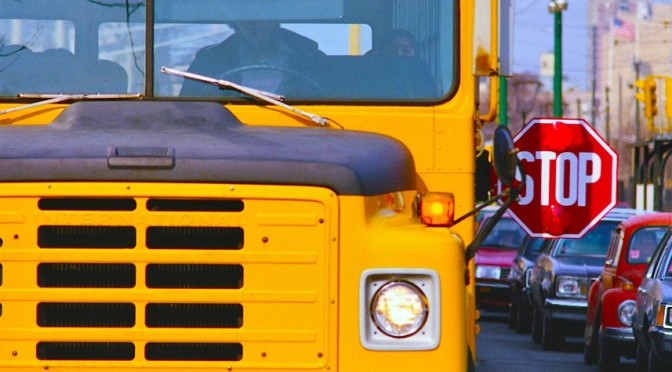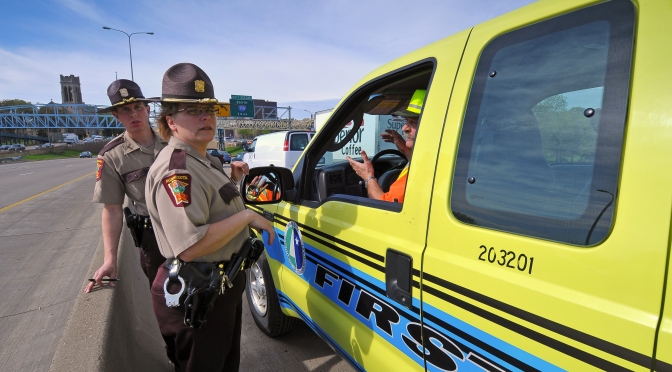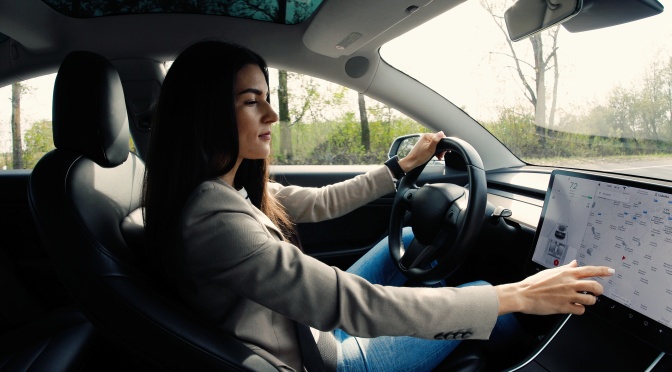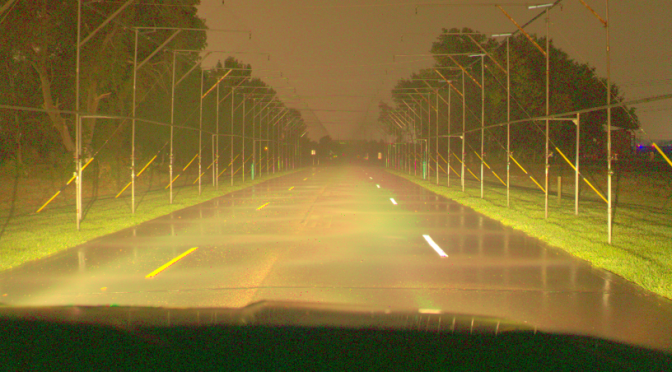When a motorist ignores an extended school bus stop arm, it creates a direct and serious risk to children boarding and exiting a school bus. Capturing information about such incidents is a critical step in better understanding why they occur and how they can be prevented.
Continue reading New Project: Development of a System to Report School Bus Stop Arm ViolationsTag Archives: safety
New Project: Evaluation of Static and Dynamic No Right Turn on Red Signs at Traffic Signals
Making signalized intersections safer for pedestrians can be achieved by reducing points of conflict between pedestrians and vehicles. One source of conflict occurs when a vehicle makes a right turn on red (RTOR) onto a street in which pedestrians are crossing. During this turn, the driver must cross the path of pedestrians while at the same time searching for gaps in conflicting vehicle flow.
Continue reading New Project: Evaluation of Static and Dynamic No Right Turn on Red Signs at Traffic SignalsNew Project: Assessing Methods to Mitigate Cognitive and Physical Declines That Influence Driving Performance of Older Drivers
Supporting older drivers to safely age in place as they experience age-related declines is important as many Minnesota drivers are reaching retirement age. Minnesotans, 65 years and older, are expected to represent 20% of the state population by 2025, with an overall increase of 122% from 2010-2040. While older drivers are generally safe drivers, those aged 75-85 face the highest risks from injury.
Continue reading New Project: Assessing Methods to Mitigate Cognitive and Physical Declines That Influence Driving Performance of Older DriversUncovering Connections Between Gender and Transportation Safety
This post was originally posted on Catalyst, November 2022.
It’s no secret that the transportation system is an uneven playing field. Understanding disparities related to race, income, and other factors is critical, and much more work is needed. Gender in particular is an under-researched yet important aspect of the design of vehicles, infrastructure, and amenities.
Continue reading Uncovering Connections Between Gender and Transportation SafetyNew Project: Designing and Implementing Maintainable Pedestrian Safety Countermeasures
In Minnesota, one challenge with installing safety countermeasures for people walking and ensuring year-round access to pedestrian infrastructure is winter maintenance.
Continue reading New Project: Designing and Implementing Maintainable Pedestrian Safety CountermeasuresHow Did COVID-19 Affect Driver Safety?
The COVID-19 pandemic resulted in fewer drivers on Minnesota’s roads in 2020 than in the previous year. Emptier roadways seem like they should be safer, but many states measured increases in speeding. For example, California issued twice as many speeding tickets, Iowa reported a 65% increase in driving 25 mph or more over the speed limit, and Ohio experienced the highest number of traffic fatalities since 2007. Clearly, some drivers were taking advantage of empty streets to speed. The pandemic also strained police forces, resulting in less enforcement.
Continue reading How Did COVID-19 Affect Driver Safety?New Project: Tool to Estimate the Safety Impact of Vehicle Levels of Automation on Minnesota Roads
While commercially available self-driving vehicles may still be decades away, an increasing number of vehicles on the market offer advance driver assistance systems (ADAS). For example, ADAS features include adaptive cruise control, steering automation, and hands-free steering.
Continue reading New Project: Tool to Estimate the Safety Impact of Vehicle Levels of Automation on Minnesota RoadsPavement Marking Standard Project Earns National Recognition
It’s often more difficult for motorists to see road edge-lines and centerlines on rainy nights, especially in rural areas with limited lighting.
Continue reading Pavement Marking Standard Project Earns National RecognitionSeparated Bike Lanes: Filling the Gaps in Design Guidance
In recent years, many U.S. cities have been installing separated bicycle lanes (SBLs) as part of their nonmotorized transportation networks. SBLs are bicycle pathways that employ paint and a vertical element as a buffer to separate motor vehicle traffic from bicycle traffic. They reduce crash risk, increase safety and comfort, and encourage more people to use bicycles as transportation.
Continue reading Separated Bike Lanes: Filling the Gaps in Design GuidanceNew Project: Understanding Post-COVID Safety Concerns, Perceptions and Preferences of Transit and Shared Mobility Users in Minnesota
Transit ridership dropped significantly last year in Minneapolis, Duluth and other cities during the COVID-19 pandemic.
Continue reading New Project: Understanding Post-COVID Safety Concerns, Perceptions and Preferences of Transit and Shared Mobility Users in Minnesota









